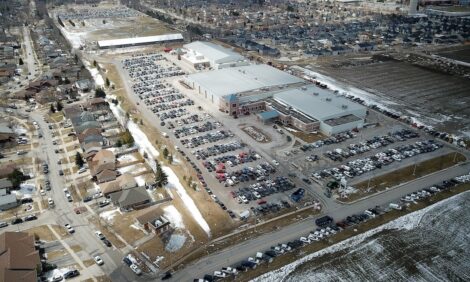



Optimise Herd Housing to Optimise Health and Production
UK - When it comes to optimising both milk production and animal welfare, dairy farmers should look to optimise their current facilities, before making substantial investments in new sheds or parlours. That was the message at two recent cow accommodation events held by AHDB Dairy and the Scottish Dairy Hub.Director of The Dairy Group Ian Ohnstad focused on optimising the milking system and ensuring a balance between high yield, high herd health and excellent milk quality. He recommended AHDB Dairy’s online tool Parlour Wizard which farmers can use to review their current facilities.
The tool allows farmers to input information about their system and then compare their current milking efficiency against standard systems. They can then examine the impact of changes in herd size, parlour size, milking routine, number of operators and level of automation on parlour throughput.
AHDB Dairy Extension Officer Sharon Lauder says: “The effects of such changes on litres per man or litres per hour is often not what farmers might expect. Milking routine and level of automation being the biggest influencing factors of parlour throughput, rather than number of milking units. I would encourage farmers to take a look at this tool to see if efficiencies might be achievable, certainly before making investment decisions.”
As well as using the Parlour Wizard to compare their systems with standard dairy units, Mr Ohnstad also advised farmers to compare and contrast their practices with other farmers.
He said: “If your neighbour can prepare the teats of a similar number of cows in half the time, can you learn something from that or are they cutting corners? What about let in and unloading? Could investing in backing gates make this process smoother and quicker? The key is to critically review each area and make appropriate changes.”
Mr Ohnstad also stressed the importance of good hygiene to milk production, with a particular emphasis on teat preparation. He noted that investing in an industrial or semi-industrial washing machine could reduce costs.
“Many farmers use paper towels for teat preparation but even inexpensive ones cost £1,000 per 100 cows per year,” Mr Ohnstad explained. “On the other hand washable cloths are a superb way of getting a really well prepared clean cows and although investing in a semi industrial washing machine costs over £3,000, in the long term many dairy farms could see substantial savings.”
Jamie Robertson of Livestock Management Systems highlighted five key areas where housing can make a real difference to herd health; moisture, fresh air, wind speed, temperature and hygiene.
“Dairy farmers can ensure their buildings are well ventilated and fit for purpose, which will help air circulation, keep moisture levels low and so decrease the risk of bacteria building up.
“However, that is not to say they should buy new buildings, they can make changes to current facilities to make them fit for purpose, and I would stress that if they are looking at investing in new buildings they must make sure they get the design right. It might cost extra to invest in high quality parlours or sheds, but diseases like mastitis and pneumonia cost farmers’ money, and they are more likely to be found in poorly designed buildings. Poor environments lead to poor health and poor production.”
Stuart Martin, who runs the Scottish Dairy Hub, said: “The hub has had an increasing number of calls recently from farmers looking for advice on parlours and housing, so it was great to deliver such a well-received event that will benefit so many of Scotland’s dairy farmers.”
AHDB Dairy’s Parlour Wizard can be found online at dairy.ahdb.org.uk. There are also two other helpful online tools for dairy farmers – Slurry Wizard and Housing Wizard.
TheCattleSite News Desk



